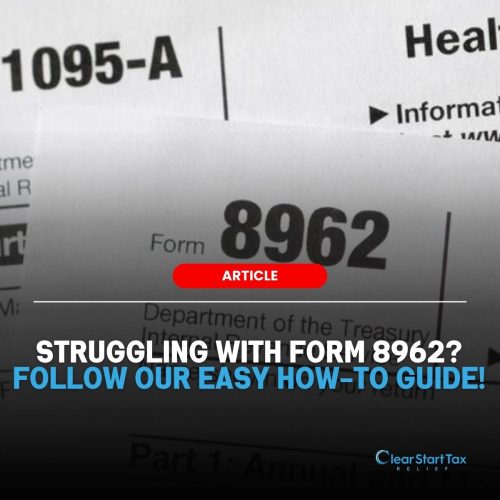Introduction
Navigating IRS Form 8962 is essential for accurately claiming the Premium Tax Credit, a beneficial tool for reducing health insurance costs through the Health Insurance Marketplace. This detailed guide aims to simplify each part of Form 8962, ensuring you understand how to correctly manage and adjust your tax credits.
Understanding Form 8962 and the Premium Tax Credit
What is the Premium Tax Credit?
This refundable credit helps lower insurance costs when you choose a plan through the Marketplace. You can apply it monthly to directly reduce premiums or claim it as a lump sum on your annual tax return.
Checking Your Eligibility for the Premium Tax Credit
To claim this credit, you must meet several requirements:
- Marketplace Enrollment: Only plans from the Marketplace qualify.
- No Other Qualifying Coverage: Including from an employer or government.
- Income Limits: Your income must be between 100% and 400% of the federal poverty level.
- Filing Requirements: Generally, you must file a joint return if married.
- Dependency Rules: You cannot be claimed as a dependent by another person.
Step-by-Step Guide to Filling Out Form 8962 Part 1- 3
I: Annual and Monthly Contribution Amount
- Calculate Your Family Size: Include yourself, your spouse if filing jointly, and any dependents.
- Determine Your Household Income: Sum up all taxable income in your household. This will be used to find your percentage of the federal poverty line.
- Find Your Applicable Figure: Using the provided table in the Form 8962 instructions, match your poverty line percentage to the corresponding figure.
- Calculate Your Annual Contribution: Multiply your household income by the percentage from the table. This is what you are expected to contribute toward your premiums annually.
- Calculate Your Monthly Contribution Amount: Divide your annual contribution by 12 to find out how much you need to pay each month towards your premiums.
II: Premium Tax Credit Claim and Reconciliation
- Report Your Monthly Premiums: List the amount paid each month for your insurance policy.
- List the Second Lowest Cost Silver Plan (SLCSP): You need this value to accurately calculate your credit, as it serves as the benchmark plan against which your payments are measured.
- Enter Advance Payment Amounts: The Marketplace pays these amounts in advance to your insurer to reduce your monthly premiums.
- Reconcile Your Advance Payments: Subtract the advance payments from your calculated credit (from Part I). If the result is positive, you’re entitled to a refund; if negative, you owe that amount.
III: Repayment of Excess Advance Payment of the Premium Tax Credit
- Calculate Excess Payment: If your actual income was higher than estimated, you might have received more credit than you deserved.
- Determine Repayment Amount: Use the table provided in the instructions to find out how much of the excess you need to repay based on your final income.
- Report on Your Tax Return: Include the repayment amount on your tax return, typically on Form 1040, Line 29.
Common Scenarios and Examples
Example 1: Income Adjustment
Scenario: John estimated his yearly income as $35,000, but actually earned $45,000.
Impact: He recalculates his premium tax credit using his actual income, potentially reducing the credit amount.
Example 2: Family Size Change
Scenario: Maria initially covered herself and one child. Mid-year, she had another child.
Action: She updates her family size to increase her credit amount, reflecting the lower expected contribution based on a larger family.
Conclusion
Form 8962 is crucial for correctly claiming the Premium Tax Credit. This guide provides the detailed steps required to fill out each part of the form 8962, ensuring you can maximize your benefits and maintain compliance with tax laws.
Call to Action
For additional assistance or personalized guidance, consider consulting with a tax professional who can provide tailored advice based on your specific circumstances.
Need Help With Back Taxes?
Explore how to REDUCE, RESOLVE, or even ELIMINATE your back taxes through the IRS Fresh Start Program.
If you owe back taxes or have IRS issues, click here or call us directly at (877) 542-0412.
Ask for a FREE CONSULTATION.






